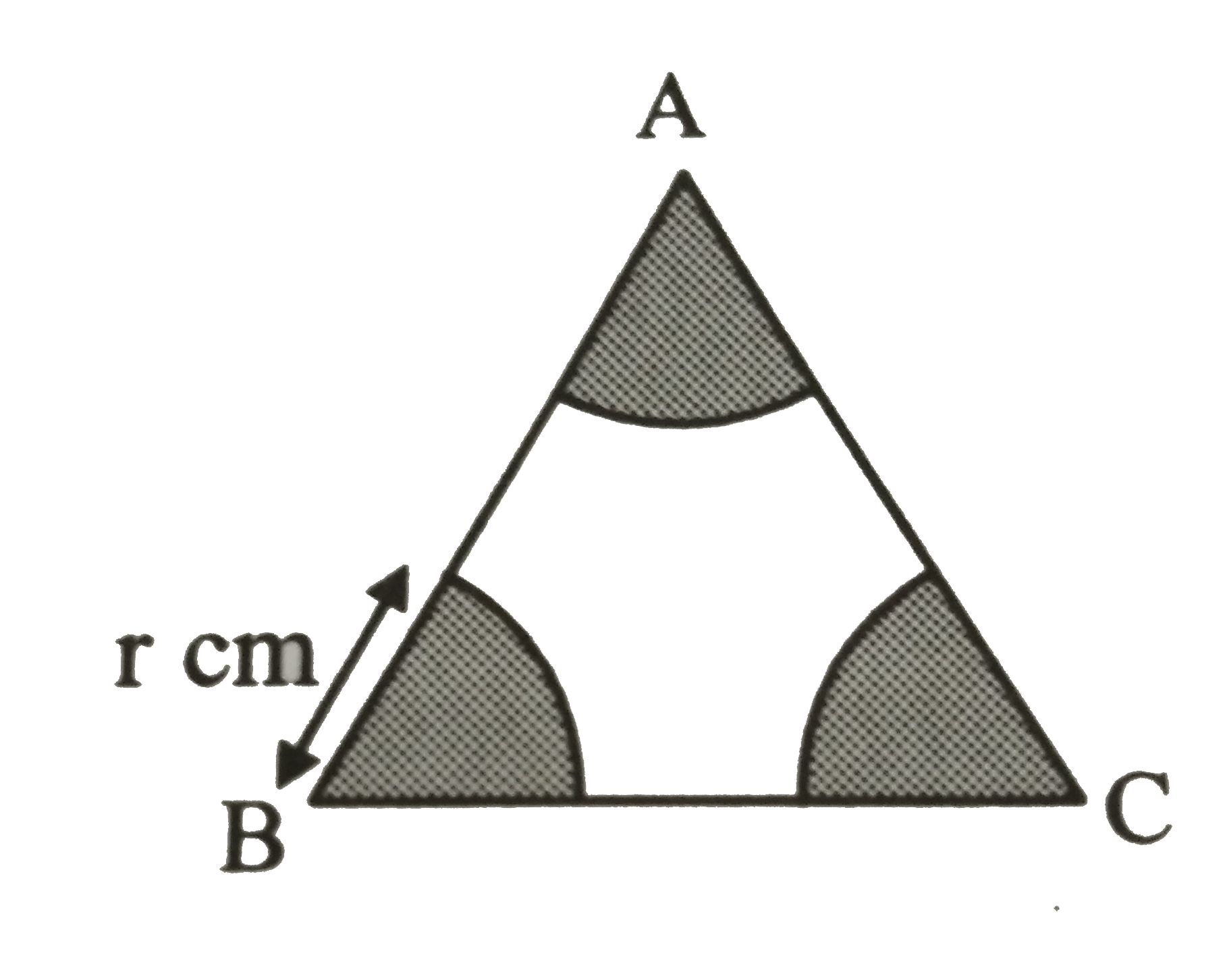the vertices A, B and C of a ΔABC as centres, arcs are drawn with radii 5cm as shown in figure. Find the area of the shaded region.
Step by step video solution for the vertices A, B and C of a Delta ABC as centres, arcs are drawn with radii 5 cm as shown in figure. Find the area of the shaded region. by Maths experts to help you in doubts & scoring excellent marks in Class 10 exams.
Updated on:21/07/2023Similar Questions
With the vertices A,B and C of a triangle ABC as centres, arcs are drawn with radii 5 cm each as shown in the given figure. If AB=14cm,BC=48cm and CA=50cm then find the area of the shaded region. [Use π=3.14]

View SolutionIn the given figure, arcs have been drawn with radii 14 cm each and with centres P, Q and R. Find the area of the shaded region.

View SolutionWith vertices A, B and C of a triangle ABC as centres, arcs are drawn with radius 6 cm each in fig. If AB= 20 cm, BC= 48 cm and CA= 52 cm, then find the area of the shaded region.

View SolutionIn figure arcs have been drawn with radii 14 cm each and with centres P, Q and R. Find the area of the shaded region .

View SolutionIn figure arcs have been drawn with radii 14 cm each and with centres P, Q and R. Find the area of the shaded region .

View SolutionIf arcs of radius r cm are drawn with the vertices of an equilateral triangle ABC as shown in the figure, then the area of the shaded region is

View SolutionIn a circular table cover of radius 32cm, a design is formed leaving an equilateral triangle ABC as shown in figure. Find the area of shaded region.
View SolutionIn the given figure, ABC is a quadrant of a circle of radius 14 cm and a semicircle is drawn with BC as diameter. Find the area of the shaded region.

View SolutionIn the figure, the radii of two concentric circles with centre O are 7 cm and 14 cm and ∠AOC=60∘. Find the area of the shaded region.

View SolutionIn Figure, ABC is an equilateral triangle inscribed in a circle of radius 4 cm with centre O . Find the area of the shaded region.
View Solution
